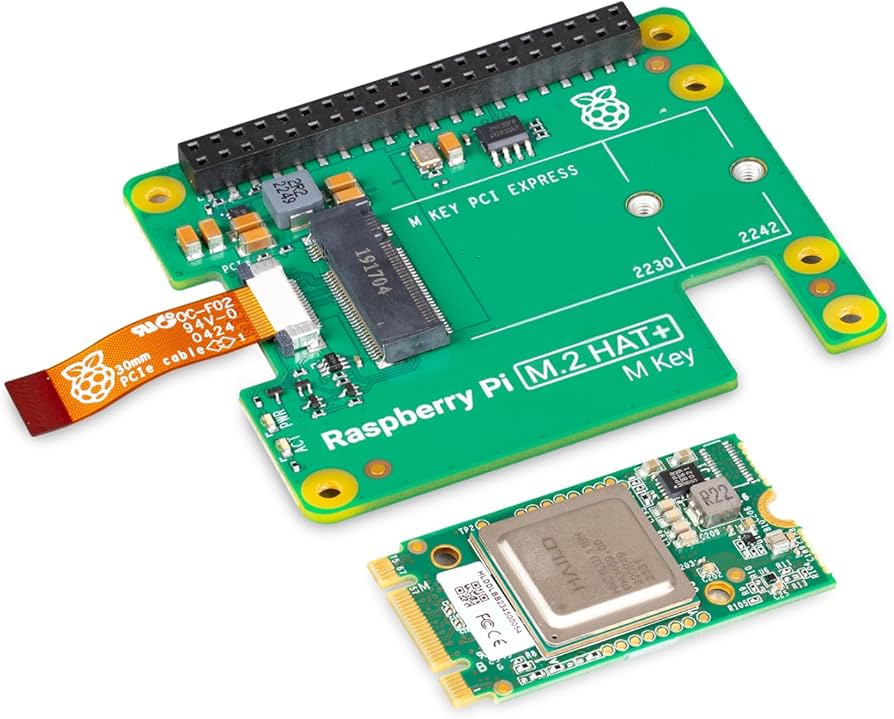 illustration from Amazon.com · In stock
illustration from Amazon.com · In stock
Unlocking AI Potential with Raspberry Pi: A Comprehensive Guide
The convergence of Artificial Intelligence (AI) and the Raspberry Pi, a low-cost single-board computer, has opened up a world of possibilities. This guide explores using Raspberry Pi for AI, covering capabilities, limitations, and applications.
Why Raspberry Pi for AI?
- Cost-effectiveness: Accessible AI experimentation.
- Versatility: Wide range of AI projects possible.
- Community Support: Ample resources and tutorials available.
- Low Power Consumption: Ideal for embedded AI applications.
- Ease of Use: User-friendly OS and extensive documentation.
Hardware Considerations
Choosing the right Raspberry Pi model is crucial.
Raspberry Pi Models:
- Raspberry Pi 4 Model B: Best performance (up to 8GB RAM). Recommended for most AI projects.
- Raspberry Pi 400: Integrated into a keyboard, ideal for desktop AI learning.
- Raspberry Pi 3 Model B/B+: Suitable for less demanding tasks.
- Raspberry Pi Zero W: Compact, low-power option for specific embedded applications.
Essential Hardware Components:
- MicroSD Card: High-speed, at least 32GB.
- Power Supply: Stable and reliable.
- Camera Module: For computer vision (V2 or High Quality).
- Microphone: For speech recognition.
- Sensors: Temperature, humidity, motion, etc.
- Actuators: Motors, LEDs, etc.
Software Setup and Configuration
- Download Raspberry Pi OS Imager: From the official website.
- Install the Operating System: Flash Raspberry Pi OS onto your microSD card.
- Boot the Raspberry Pi: Insert the microSD card and power on.
- Configure: Connect to Wi-Fi, set password, enable SSH.
- Update and Upgrade:
sudo apt update sudo apt upgrade
Essential AI Libraries and Frameworks
- TensorFlow Lite: Lightweight TensorFlow for embedded devices.
- PyTorch Mobile: Deploy PyTorch models on resource-constrained devices.
- OpenCV: Computer vision library.
- Scikit-learn: Machine learning library.
- Keras: High-level neural networks API.
- NumPy: Numerical computing in Python.
- SciPy: Scientific and technical computing.
Install using pip:
pip install tensorflow-lite-support
pip install opencv-python
pip install scikit-learn
pip install keras
pip install numpy
pip install scipyPractical AI Projects with Raspberry Pi
1. Object Detection
Detect objects in real-time. Useful for security, inventory, or robotics.
Example: TensorFlow Lite with MobileNet SSD.
2. Face Recognition
Develop a face recognition system for security or attendance.
Example: OpenCV and face_recognition library.
3. Home Automation
Create a smart home system responding to voice or conditions.
Example: Integrate with Google Assistant/Alexa, use sensors for environment monitoring.
4. Anomaly Detection
Detect anomalies in data streams.
Example: Isolation forests or one-class SVM for fraud detection.
5. Image Classification
Classify images using deep learning.
Example: CNN with Keras and TensorFlow, classify images from CIFAR-10 or ImageNet.
6. Robotics
Develop AI-powered robots.
Example: Use Raspberry Pi for path planning and object recognition.
7. Environmental Monitoring
Monitor environmental conditions.
Example: Connect sensors, use ML to analyze data for environmental protection.
Optimizing AI Performance on Raspberry Pi
- Model Quantization: Convert models to lower precision.
- Model Pruning: Remove unnecessary connections.
- Hardware Acceleration: Use GPU or AI accelerators.
- Optimize Data Input: Efficient data preprocessing.
- Use Efficient Algorithms: Choose algorithms suited for Raspberry Pi.
Addressing Ethical Considerations
- Data Privacy: Handle personal data responsibly.
- Bias Mitigation: Be aware of biases.
- Transparency and Explainability: Make models understandable.
- Accountability: Be accountable for AI decisions.
Troubleshooting Common Issues
- Insufficient Memory: Increase swap space or use more RAM.
- Slow Performance: Optimize models.
- Software Compatibility: Ensure library compatibility.
- Hardware Limitations: Choose appropriate projects.
The Future of Raspberry Pi and AI
- Edge Computing: Local data processing.
- Internet of Things (IoT): Smart and autonomous systems.
- Robotics and Automation: Intelligent robots.
- Healthcare: Improved medical care.
- Education: Accessible AI training.
Call to Action
Explore, experiment, and join the Raspberry Pi community. Share your creations and contribute to AI advancement!
Published on March 19, 2025
reference: https://www.raspberrypi.org/
Gema
Wordsmith and content writer passionate about creating high-quality content that informs, entertains, and inspires. Let me bring your brand's story to life.
All stories by : Gema

0 Comments